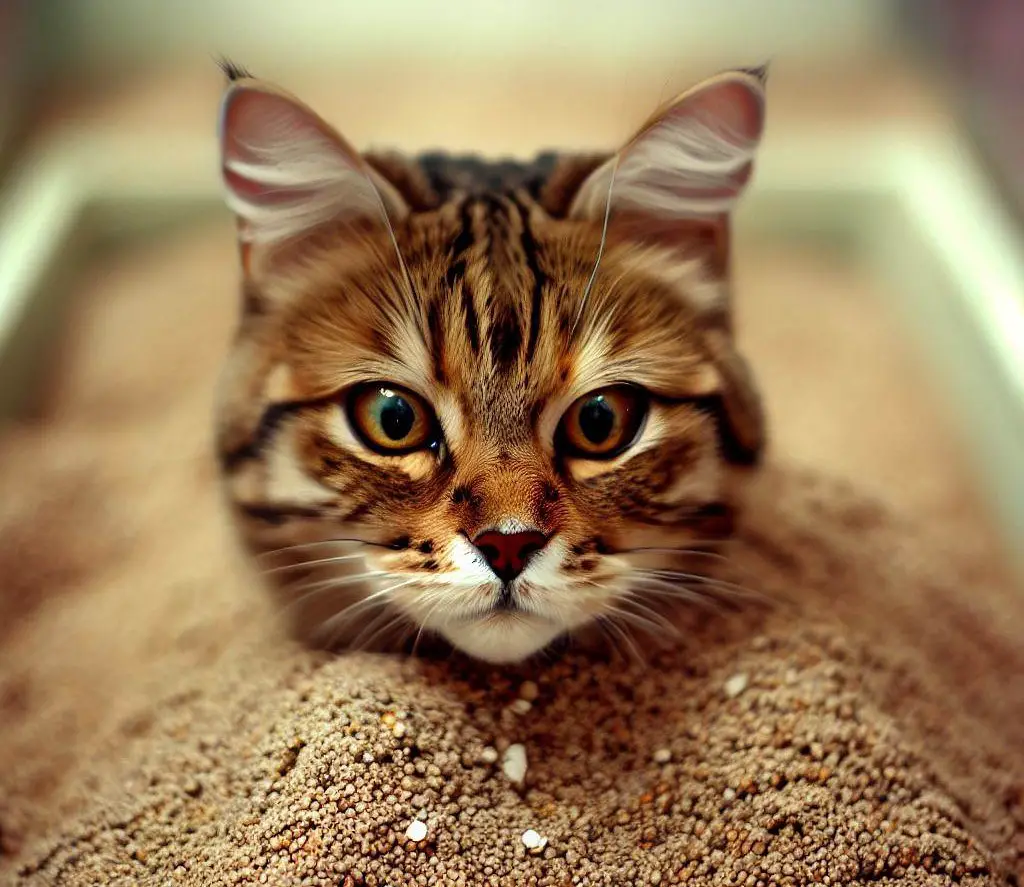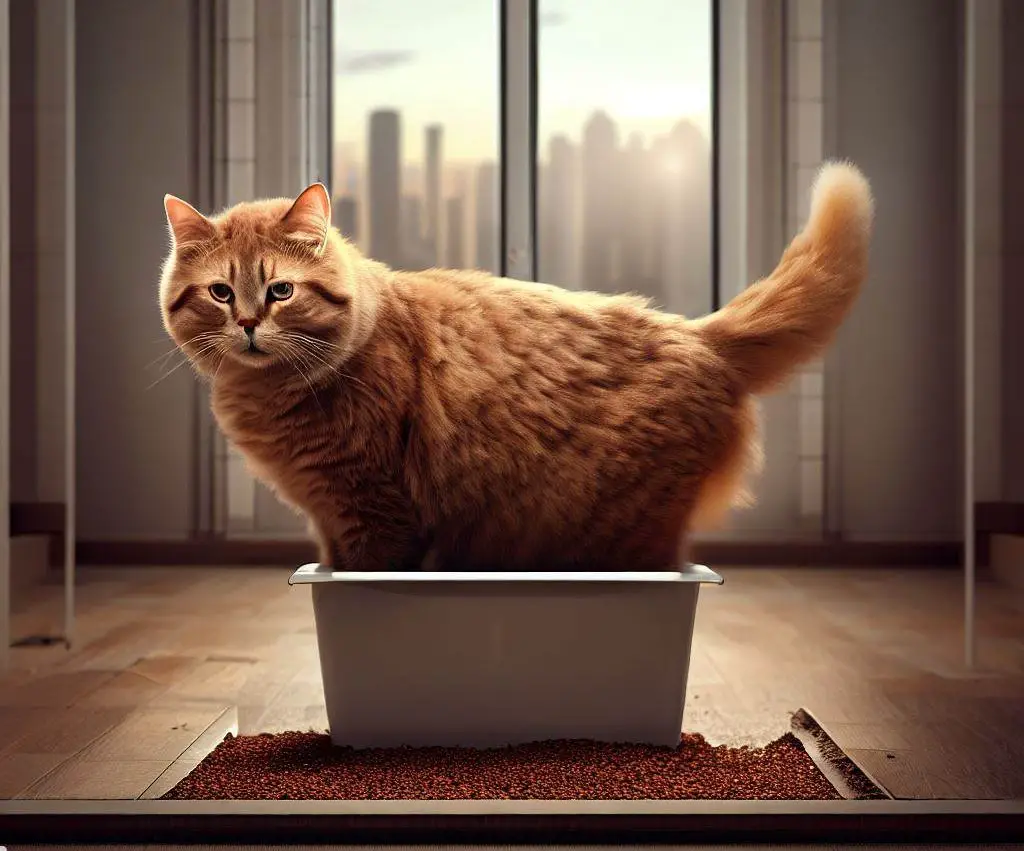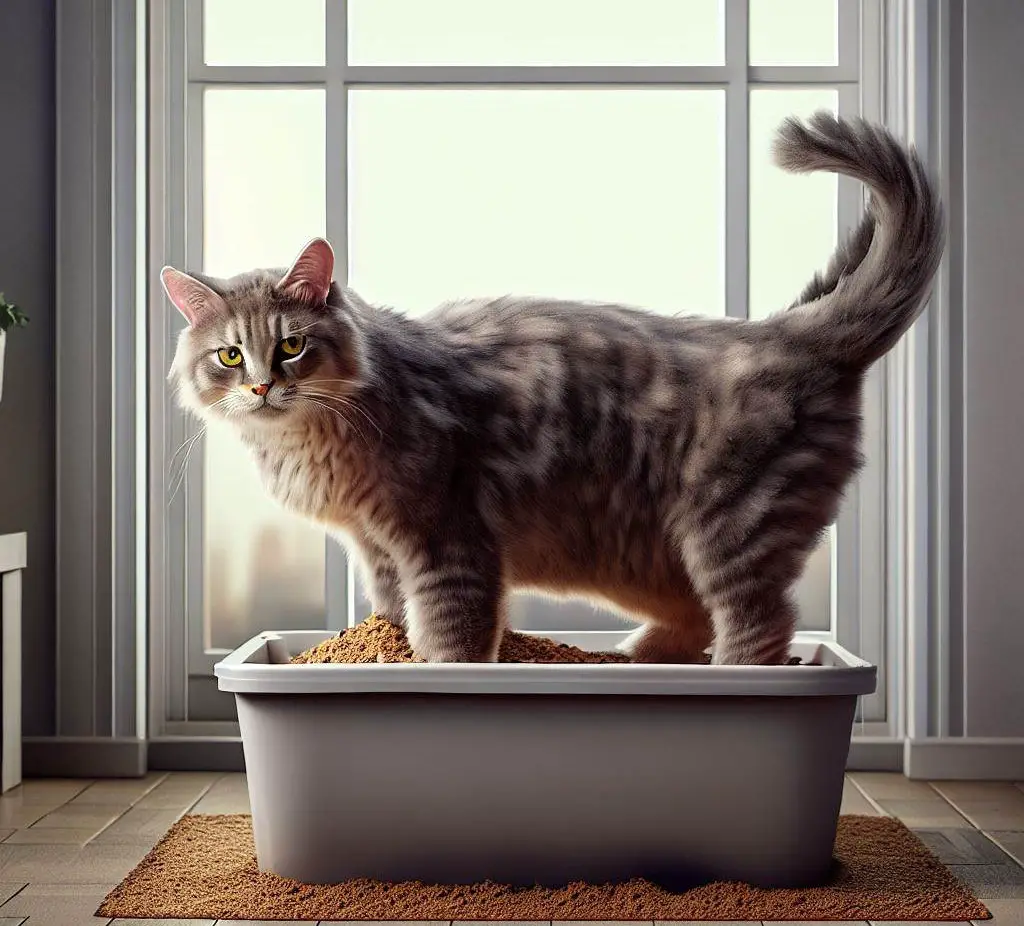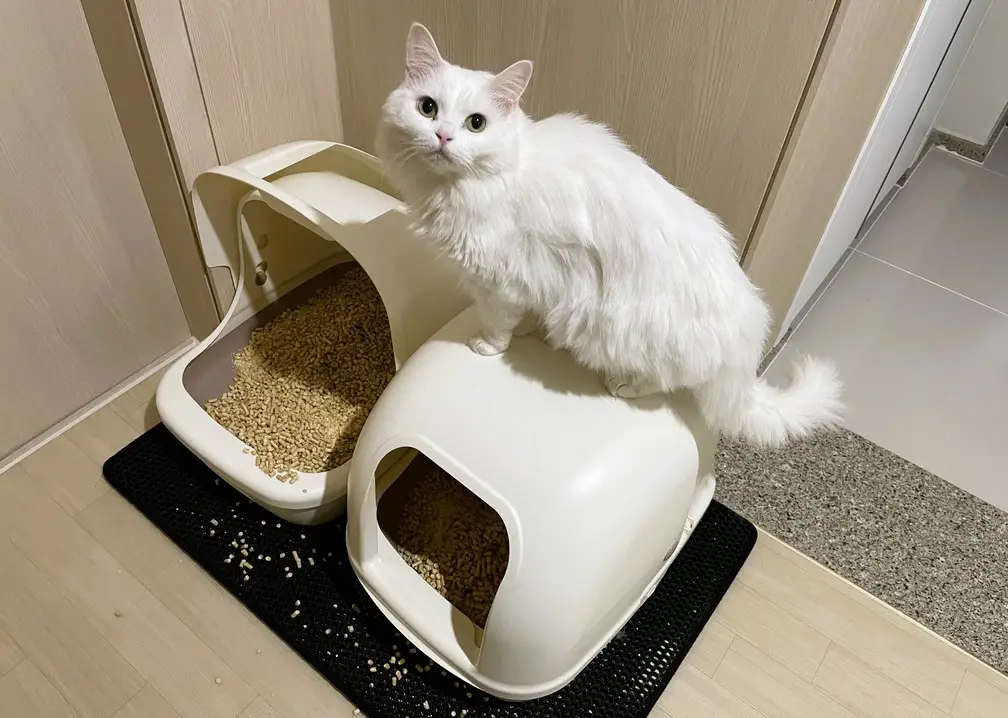As a cat owner, you probably know how important it is to provide your feline friend with a clean and comfortable litter box. But did you know litter box size is more than just a location for your cats to do their business? This blog post will answer these questions and more based on scientific research and expert opinions.

So how big should your cat’s litter box be? Cats prefer larger than smaller litter boxes because they offer more space to move around and avoid dirty areas. More specifically, cats prefer litter boxes that are at least 1.5 times longer than your cat’s body length (excluding tail).
If you’re short on time, let me answer quickly: a large (again, at least 1.5 times longer than your cat), hooded/covered litter box without a door is likely the best litter box for most people.
However, there are nuances, and every cat is different and may have preferences based on their personality, health condition, or previous experiences. Read below for more insights into what cats prefer regarding their litter box, with the science that backs it!
Why Litter Box Size Matters
Let’s look at the scientific research to understand how important the right litter box size is for your cat. Studies on cat behavior and litter box preferences can help us make better choices for our furry friends.
One study in the Journal of Feline Medicine and Surgery found that a proper-sized litter box can help reduce cat health problems. Cats with small or dirty litter boxes were likelier to have urinary issues like bladder infections. This is because stress can cause health problems in cats, and a small or dirty litter box can make them feel stressed.
This implies that the size of a litter box is essential for your cat’s happiness and health. A larger litter box can help your cat feel more comfortable and less stressed, leading to fewer health problems.
The Science: How Big Should Your Cat’s Litter Box Be?



In a study in the Journal of Veterinary Behavior involving 43 households with 74 privately owned cats were each provided with two different-sized plastic containers filled with clumping cat litter.
The larger box was 86 cm long, exceeding the size of commercially available litterboxes. The owners recorded daily urine and fecal deposits in each box for four weeks.
- The results showed that over the 28 days, there were more urine and fecal deposits in the larger boxes than in the regular boxes. This preference was consistent across both phases of the study, even when the boxes were switched to opposite locations after two weeks.
- The study also found that urine deposits were more frequent than fecal deposits and that other factors, such as the number of cats in the house, their average age, and gender, did not affect their choice.
- The authors suggest that most cats prefer a larger litterbox because it offers more space and comfort to perform their natural behaviors, such as digging, covering, and turning around.
- They also hypothesize that a larger litterbox may reduce cat stress and anxiety, leading to fewer inappropriate elimination cases or urinary tract infections.
So what does the study recommend? They recommend providing your cat with a litterbox at least 1.5 times longer than your cat’s body length (excluding the tail).
Factors to Consider for Choosing the Right Litter Box Size
These other factors can help you find the right litter box size and type for your cat and home.
A. Your cat’s size and age. Bigger cats need bigger litter boxes, giving them enough space to turn around and do their business comfortably. If you have a kitten, remember that they will grow, so plan for a bigger litter box as they age.
B. The number of cats in the household. If you have more than one cat, you should have one litter box for each cat, plus one extra.
This helps ensure that there is always a clean and available litter box for each cat (although this is not a hard-and-fast rule, cats can easily share the litter box). Bigger litter boxes can also be helpful if you have multiple cats, as they provide more space for each cat to have their own area.
C. Available space in your home. Consider the area where you plan to put the litter box. Ensure there is enough room for the litter box and that it is easy for your cat to access. If you have limited space (such as a small studio apartment), you may need to be creative in finding a spot for the litter box, but always prioritize your cat’s comfort and accessibility.
D. Type of litter used. Different types of cat litter can affect how big the litter box should be.
Clumping clay litter is lightweight and can spread quickly in your home, so using a larger litter box may help contain the dust generated by your cats’ usage. While heavier, larger pellets have the opposite effect.
Here is the litter type I use with my cats: Complete Pine Litter Guide.
What is the Best Type of Cat Litter Box?
There are different types of litter boxes available for cats. Some of the most common types include:
- Open litter boxes: These are the most common type of litter boxes. They are simple and easy to use, and they are also easy to clean and maintain. However, they do not provide much privacy for the cat.
Best for first-time cat owners or need a quick letter box setup, as it’s the least expensive and can be used by anybody. - Covered litter boxes: These litter boxes come with a cover or hood. They provide more privacy for the cat, and they also help to contain litter and odor.
Best for 99% of people. Simple and aesthetically pleasing, it has most functions that most cat butlers require. - Self-cleaning/Automatic litter boxes: These litter boxes use sensors to detect when the cat has used the litter box and scoop out the waste automatically. These litter boxes are, of course, convenient and save a lot of time. However, they can be expensive in terms of the initial and repair costs!
Best for those extremely busy or highly sensitive to smells or dust. These litter boxes require minimal maintenance (apart from monthly deep cleans). - Top-entry litter boxes: These litter boxes have a top entry. They are designed to prevent litter from being scattered outside the box. They also provide more privacy for the cat. However, they can be difficult for some cats to use.
Best for those living in space-sensitive environments who want to minimize litter tracking.

In the above blog post, I share my experience trying covered and uncovered litter boxes. I found that my cats had a preference for the covered litter box.
Tips for Ensuring Your Cat’s Comfort and Happiness
Once you have chosen the right size and style of litter box for your cat, there are a few more things you can do to make sure your cat stays comfortable and happy advised by experts:
- Proper cleaning and maintenance: Keeping your cat’s litter box clean is essential for their comfort and health. Scoop out waste at least once a day, completely replace the litter, and clean the box every 1-2 weeks, depending on the type of litter you use (what’s the best type of litter for you?). This will help control odors and prevent the growth of bacteria.
- Encouraging good litter box habits: Make sure your cat knows where their litter box is and that they feel comfortable using it. You can gently place your cat in the litter box after meals or playtime to help them form a habit of using it. If your cat is having trouble using the litter box consistently, try placing it in a different, quieter location or experimenting with different types of litter.
- When to consider a larger or additional litter box: If you notice your cat is having accidents outside the litter box or seems unhappy with their current litter box, it might be time to consider getting a larger or additional litter box. This can be especially important if you have multiple cats or your cat is growing.
By taking these steps, you can ensure that your cat feels comfortable and happy with their litter box. Regularly observing your cat’s behavior and adjusting as needed will help you create a pleasant environment for your furry friend.
For more indoor litter box management, check out: Apartment Litter Box Solutions!
Conclusion: Bigger IS Better for Litter Boxes
Choosing the right litter box size for your cat is crucial for their happiness and well-being. You can select a litter box that meets your cat’s needs by considering factors such as size, the number of cats in your household, and the available space in your home. Understanding the science behind litter box sizes and weighing the pros and cons of different types of litter boxes can also help you make an informed decision.
Remember that every cat is unique, and what works for one may not work for another. Be prepared to make adjustments and observe your cat’s behavior to ensure their happiness and well-being.
